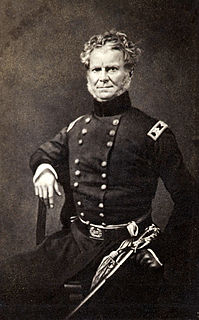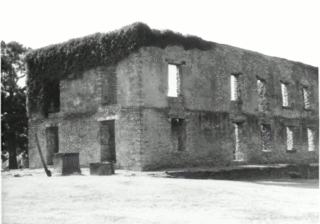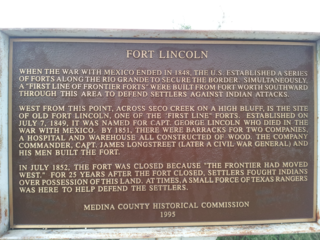
Burnet County is a county located on the Edwards Plateau in the U.S. state of Texas. As of the 2010 census, the population was 42,750. Its county seat is Burnet. The county was founded in 1852 and later organized in 1854. It is named for David Gouverneur Burnet, the first (provisional) president of the Republic of Texas. The name of the county is pronounced with the emphasis or accent on the first syllable, just as is the case with its namesake.

Burnet is a city in and the county seat of Burnet County, Texas, United States. The population was 5,987 at the 2010 census.

Benjamin McCulloch was a soldier in the Texas Revolution, a Texas Ranger, a major general in the Texas militia and thereafter a major in the United States Army during the Mexican–American War, a U.S. marshal, and a brigadier general in the army of the Confederate States during the American Civil War.

Henry Eustace McCulloch was a soldier in the Texas Revolution, a Texas Ranger, and a brigadier general in the army of the Confederate States during the American Civil War.

Fort Duncan was a United States Army base, set up to protect the first U.S. settlement on the Rio Grande near the current town of Eagle Pass, Texas.

The history of Fort Worth, Texas, in the United States is closely intertwined with that of northern Texas and the Texan frontier. From its early history as an outpost and a threat against Native American residents, to its later days as a booming cattle town, to modern times as a corporate center, the city has changed dramatically, although it still preserves much of its heritage in its modern culture.

Fort Griffin, now a Texas state historic site as Fort Griffin State Historic Site, was a US Cavalry fort established 31 July 1867 by four companies of the Sixth Cavalry, U.S. Army under the command of Lt. Col. S.D. Sturgis, in the northern part of West Texas, specifically northwestern Shackelford County, to give settlers protection from early Comanche and Kiowa raids. Originally called Camp Wilson after Henry Hamilton Wilson, a recently deceased lieutenant, it was later named for Charles Griffin, a former Civil War Union general who had commanded, as de facto military governor, the Department of Texas during the early years of Reconstruction.

Fort McKavett State Historic Site is located in Menard County, Texas, United States. Fort McKavett was a frontier fort established as Camp on the San Saba in 1852 to protect settlers from Indian raids. The camp was renamed in honor of Captain Henry McKavett, who was killed in the Mexican–American War battle of Monterrey.

Logan Vandeveer, early Texas Ranger, soldier, pioneer; ranger, cattleman, and civic leader, was born in Casey County, Kentucky, around 1815. He was the son of William and Emily (Shackleford) Vandeveer. He came to Texas in 1833, joining Stephen F. Austin's Little Colony at Mina in present-day Bastrop County.
Peter Kerr, also known as Peter Carr, was one of the founders of Burnet, Texas and a member of the Old Three Hundred, the original settlers in Stephen F. Austin's colony.

Fort Washita is the former United States military post and National Historic Landmark located in Durant, Oklahoma on SH 199. Established in 1842 by General Zachary Taylor to protect citizens of the Choctaw and Chickasaw Nations from the Plains Indians it was later abandoned by Federal forces at the beginning of the American Civil War. Confederate troops held the post until the end of the war when they burned the remaining structures. It was never reoccupied by the United States military. After years in private hands the Oklahoma Historical Society bought the fort grounds in 1962 and restored the site. Today the Fort Washita Historic Site and Museum is a tourist attraction and hosts several events throughout the year.

Fort Martin Scott is a restored United States Army outpost near Fredericksburg in the Texas Hill Country, United States, that was active from December 5, 1848, until April, 1853. It was part of a line of frontier forts established to protect travelers and settlers within Texas.

Fort Graham was a pioneer fort established in 1849 by Brevet Major R.A. Arnold at the site of Jose Maria Village, an Anadaca camp on the western edge of present-day Hill County, Texas. It remained in service until 1853, when settlements had moved further west. It was named after Col. William M. Graham, who died at the Battle of Molina del Rey.

Smithwick is an unincorporated community in Burnet County, Texas, United States. Smithwick is located on Ranch to Market Road 1431 eight miles east of Marble Falls. Smithwick was formed in 1882 from three smaller communities, Hickory Creek, Elm Grove, and Smithwick Mills, named after Noah Smithwick's mill on the Colorado River.

Fort Gates, was a United States Army fort established on October 26, 1849 as Camp Gates by Captain William Reading Montgomery and two companies of the Eighth United States Infantry. The fort was located on the north bank of the Leon River about five miles east of the site of present Gatesville, Texas. The installation was named for Brevet Major Collinson Reed Gates of New York, a noted officer in the Battle of Palo Alto and the Battle of Resaca de la Palma. The fort was established to protect settlers on the Texas frontier from Indians. The fort was garrisoned by companies D, I, F, and H of the Eighth United States Infantry. In April 1851, 256 enlisted men and forty-five officers were stationed at Fort Gates, the most reported in a single month.

Mormon Mill is a vanished Mormon colony established in 1851 on Hamilton Creek in Burnet County, in the U.S. state of Texas. The site is located on Mormon Mills Road 5 miles (8.0 km) north of Marble Falls and 10 miles (16 km) south of Burnet. Mormon Mill has also been known as Mormon Mills, Mormon Mill Colony and Mormon Mill Historical Site. Designated a Recorded Texas Historic Landmark in 1936, Marker number 9733. The population moved to another county in 1853, and no buildings remain of the colony.
Fort Shirley was a fort erected by the Province of Pennsylvania during the French and Indian War.

Fort Lincoln is a town in Medina County, Texas. It was established on July 7, 1849 by Major James Longstreet, with two companies of the Eighth United States Infantry, after the Mexican–American War. The fort is named in honor of Captain George Lincoln who was killed in the Battle of Buena Vista. The fort was abandoned on July 20, 1852.
Noah Smithwick was a colonist who lived in Texas from 1827 and until the Civil War began. A gun and blacksmith, he fought in the Texas Revolution and served as a Texas Ranger. Late in life he dictated his recollections of this early Texas period to his daughter, relaying colorful and humorous accounts, which included legendary Texans Stephen F. Austin, James Bowie, William B. Travis, Thomas Jefferson Rusk, and Sam Houston, who he knew personally.





















